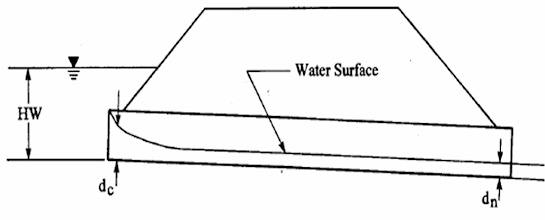HYDRAULIC DESIGN OF CULVERTS
As Development of Roads in India taking place rapidly, cross drainage works is essential part of road works. Inadequate drainage invariably results in reduction of life span of a road. Drainage costs (Including Culverts) only 4% to 5% of the total project cost.
Some important IRC codes
• IRC:SP:42 (2015) - guidelines for design of road drainage
• IRC:SP:13 (2014)- Design of Small bridges& culverts
• IRC:SP:50 (2015) -Urban road drainage
• IRC: SP:48 (1998)- Hill road drainage
PLANNING & DATA COLLCTION
• Planning Of Culverts For Effective Road Drainage
• Location-New Projects-Up-gradation
• Types, Size and Spacing
• Data Collection
• Inventory
• Maintenance
HYDROLOGICAL DESIGN
• Estimation of Design Peak Flood by
• (a) Rational Formula
Q = 0.028f Pm Ic A
Pm = Σ(Pi Ai ) / ΣAi (i=1,2,3....)
Ic = (F/T) [(T+1) / tc +1)]
tc= [0.88(L3/∆H)]0.385
tc= t1+ t2+t3+…
HYDROLOGICAL DESIGN
(b) SCS Method of Determining Peak Flood
Q = [(P – Ia )2] / [(P-Ia) + S]
Q = Accumulated run-off in mm
P = Accumulated rainfall in mm
Ia =Initial abstraction prior to run-off in mm
S = Potential maximum retention in mm
Procedure for Estimation of Q is given in IRC:SP:42(2015)
Return Period
Rainfall Analysis
Intensity-Duration-Frequency
| Type of Structure | Return Period | Frequency Factor |
| Drains | 10 yrs | 1.0 |
| Culverts | 25 yrs | 1.10 |
| Minor Bridges | 50 yrs | 1.20 |
| Major Bridges | 100 yrs | 1.25 |
Full Flow & Part Flow
Inlet & Outlet Control
Q =Co Ao (2gHW)1/2- For Inlet Control (part flow)
Typical Inlet Control Type Culvert with Orifice Type Flow at Entry
Outlet Control –Full Flow
HW = ho + H – Lso
H = total head loss at entry, exit and in friction in m =He + Hf +Ho
= (Ke+Kf +1) V2/2g or V =√[(2g H) /(1+Ke+Kf)]- Supported Flow
V=√[(2g H) /(Ke+Kf) for Unsupported Flow
• Size Governed by (i)Afflux(ii) Submergence u/s
• D/s Velocity/Energy Dissipation
• Debris/Annual Maintenance
• Improved Design where bottom is below Ground
• Inlet and Outlet Transitions
• Use of Software e.g. Culvert Master by Haestad
* For Hydraulic Characteristics of Circular section click here --> Link
My Suggestion:- After observing various culvert cases, in which road gets over topped, due to insufficient discharge through pipe or due to blockage. In case of pipe culverts % obstruction is much more as compared wider openings of slab drains hence water gets stored (I don't think afflux word be appropriate in this case) then flood level rises on upstream side and road gets overtopped, to avoid such condition their must be free board between RTL and the maximum possible flood level on upstream side of the culvert. This will cause unnecessary leave increase in height of head wall but there is no need to increase the height of head wall as it can act as a to wall for the slope of embankment, as shown in below drawing, help in achieving economy in construction as well as reducing maintenance cost for future.









0 Comments
If you have any doubts, suggestions , corrections etc. let me know